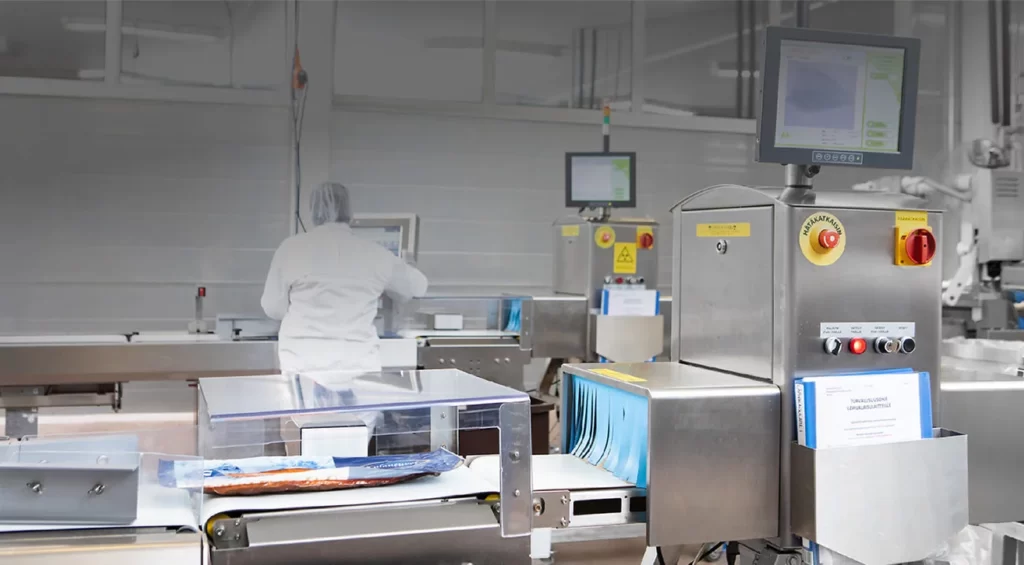X-ray Inspection
X-ray inspection is a non-destructive testing method that uses X-rays to inspect the internal structure and components of a product or component. It is typically used to detect defects or deviations from design specifications that may not be visible with the naked eye or with other inspection methods, such as visual inspection or 3D AOI (Automated Optical Inspection).
X-ray inspection is commonly used in the electronics manufacturing industry to inspect printed circuit boards (PCBs) and other electronic components for defects. It can also be used to inspect a wide range of other products, including medical devices, aerospace components, and automotive parts.

There are several types of X-ray inspection systems available, including:
- Industrial X-ray systems: These systems use high-energy X-rays to inspect large or dense products, such as castings or welded assemblies.
- Micro X-ray systems: These systems use low-energy X-rays to inspect small or thin products, such as PCBs or microelectronic components.
- Computed tomography (CT) systems: These systems use X-rays to create detailed 3D images of the internal structure of a product.
X-ray inspection has several advantages over other inspection methods, including:
- Non-destructive testing: X-ray inspection does not damage the product being inspected.
- High resolution: X-ray systems can detect small defects or deviations from design specifications.
- Versatility: X-ray inspection can be used to inspect a wide range of products and materials.
However, there are also some limitations to X-ray inspection, including:
- Cost: X-ray systems can be expensive to purchase and maintain.
- Safety concerns: X-rays can be harmful to humans, so special precautions must be taken when using these systems.
- Complexity: Some defects may be difficult to detect with X-ray inspection, especially if they are subtle or hidden.
- Limited to surface inspection: X-ray inspection is typically limited to inspecting the surface of a product or component, and may not be able to detect internal defects.
- What is X-ray inspection?
X-ray inspection is a non-destructive testing method that uses X-rays to inspect the internal structure and components of a product or component. It is typically used to detect defects or deviations from design specifications that may not be visible with the naked eye or with other inspection methods, such as visual inspection or 3D AOI (Automated Optical Inspection).
- What types of products can be inspected with X-ray inspection?
X-ray inspection can be used to inspect a wide range of products, including:
- Printed circuit boards (PCBs) and other electronic components
- Medical devices
- Aerospace components
- Automotive parts
- Castings and welded assemblies
- What are the benefits of X-ray inspection?
There are several benefits to using X-ray inspection:
- Non-destructive testing: X-ray inspection does not damage the product being inspected.
- High resolution: X-ray systems can detect small defects or deviations from design specifications.
- Versatility: X-ray inspection can be used to inspect a wide range of products and materials.
- What are the limitations of X-ray inspection?
There are a few limitations to X-ray inspection:
- Cost: X-ray systems can be expensive to purchase and maintain.
- Safety concerns: X-rays can be harmful to humans, so special precautions must be taken when using these systems.
- Complexity: Some defects may be difficult to detect with X-ray inspection, especially if they are subtle or hidden.
- Limited to surface inspection: X-ray inspection is typically limited to inspecting the surface of a product or component, and may not be able to detect internal defects.
- How does X-ray inspection work?
In X-ray inspection, a high-energy X-ray source is used to generate X-rays that pass through the product being inspected. A detector on the other side of the product captures the X-rays that pass through and converts them into an electronic image. This image is then analyzed by software to detect defects or deviations from design specifications.
There are several types of X-ray inspection systems available, including industrial X-ray systems, micro X-ray systems, and computed tomography (CT) systems. Industrial X-ray systems are used to inspect large or dense products, while micro X-ray systems are used to inspect small or thin products. CT systems use X-rays to create detailed 3D images of the internal structure of a product.

